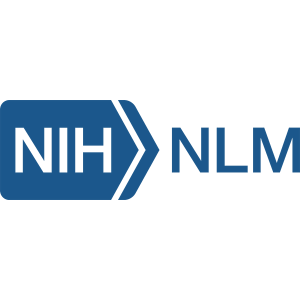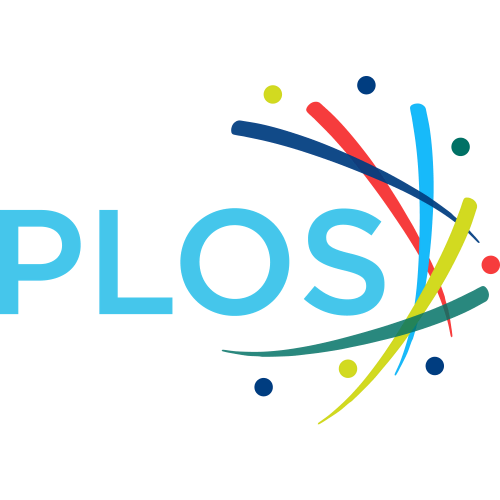Open Access


Escherichia coli ItaT is a type II toxin that inhibits translation by acetylating isoleucyl-tRNAIle
Brendan Wilcox
1
,
Ilya A Osterman
1, 2
,
M. V. Serebryakova
1, 2
,
Dmitry Lukyanov
2
,
Ekaterina S Komarova
1, 2
,
Bridget Gollan
3
,
Natalia Morozova
1, 4
,
Yuri I. Wolf
5
,
Kira S. Makarova
5
,
Sophie Helaine
3
,
Petr V. Sergiev
1, 2
,
Svetlana Dubiley
1, 6
,
S. Borukhov
7
,
Konstantin Severinov
1, 6, 8
5
7
Department of Cell Biology, Rowan University School of Osteopathic Medicine at Stratford, Stratford, NJ 08084-1489, USA
|
Publication type: Journal Article
Publication date: 2018-06-21
scimago Q1
wos Q1
SJR: 7.776
CiteScore: 31.7
Impact factor: 13.1
ISSN: 03051048, 13624962
PubMed ID:
29931259
Genetics
Abstract
Abstract Prokaryotic toxin–antitoxin (TA) modules are highly abundant and are involved in stress response and drug tolerance. The most common type II TA modules consist of two interacting proteins. The type II toxins are diverse enzymes targeting various essential intracellular targets. The antitoxin binds to cognate toxin and inhibits its function. Recently, TA modules whose toxins are GNAT-family acetyltransferases were described. For two such systems, the target of acetylation was shown to be aminoacyl-tRNA: the TacT toxin targets aminoacylated elongator tRNAs, while AtaT targets the amino acid moiety of initiating tRNAMet. We show that the itaRT gene pair from Escherichia coli encodes a TA module with acetyltransferase toxin ItaT that specifically and exclusively acetylates Ile-tRNAIle thereby blocking translation and inhibiting cell growth. ItaT forms a tight complex with the ItaR antitoxin, which represses the transcription of itaRT operon. A comprehensive bioinformatics survey of GNAT acetyltransferases reveals that enzymes encoded by validated or putative TA modules are common and form a distinct branch of the GNAT family tree. We speculate that further functional analysis of such TA modules will result in identification of enzymes capable of specifically targeting many, perhaps all, aminoacyl tRNAs.
Found
Nothing found, try to update filter.
Found
Nothing found, try to update filter.
Top-30
Journals
|
1
2
3
4
5
|
|
|
Nucleic Acids Research
5 publications, 13.89%
|
|
|
Nature Communications
4 publications, 11.11%
|
|
|
Nature Chemical Biology
2 publications, 5.56%
|
|
|
Microbiology spectrum
2 publications, 5.56%
|
|
|
Pathogens
1 publication, 2.78%
|
|
|
Toxins
1 publication, 2.78%
|
|
|
Frontiers in Genetics
1 publication, 2.78%
|
|
|
Frontiers in Microbiology
1 publication, 2.78%
|
|
|
Nature Reviews Microbiology
1 publication, 2.78%
|
|
|
Biophysics Reports
1 publication, 2.78%
|
|
|
BMC Biology
1 publication, 2.78%
|
|
|
Gene Reports
1 publication, 2.78%
|
|
|
Structure
1 publication, 2.78%
|
|
|
Computational and Structural Biotechnology Journal
1 publication, 2.78%
|
|
|
Cell Reports
1 publication, 2.78%
|
|
|
Molecular Microbiology
1 publication, 2.78%
|
|
|
Journal of the Science of Food and Agriculture
1 publication, 2.78%
|
|
|
Microbiology and Molecular Biology Reviews
1 publication, 2.78%
|
|
|
BMB Reports
1 publication, 2.78%
|
|
|
Journal of Antimicrobial Chemotherapy
1 publication, 2.78%
|
|
|
bioRxiv
1 publication, 2.78%
|
|
|
Science advances
1 publication, 2.78%
|
|
|
mBio
1 publication, 2.78%
|
|
|
PLoS Pathogens
1 publication, 2.78%
|
|
|
Journal of Molecular Biology
1 publication, 2.78%
|
|
|
1
2
3
4
5
|
Publishers
|
1
2
3
4
5
6
7
8
|
|
|
Springer Nature
8 publications, 22.22%
|
|
|
Oxford University Press
6 publications, 16.67%
|
|
|
Elsevier
5 publications, 13.89%
|
|
|
American Society for Microbiology
4 publications, 11.11%
|
|
|
Cold Spring Harbor Laboratory
3 publications, 8.33%
|
|
|
MDPI
2 publications, 5.56%
|
|
|
Frontiers Media S.A.
2 publications, 5.56%
|
|
|
Wiley
2 publications, 5.56%
|
|
|
Biophysical Society of China
1 publication, 2.78%
|
|
|
Korean Society for Biochemistry and Molecular Biology - BMB Reports
1 publication, 2.78%
|
|
|
American Association for the Advancement of Science (AAAS)
1 publication, 2.78%
|
|
|
Public Library of Science (PLoS)
1 publication, 2.78%
|
|
|
1
2
3
4
5
6
7
8
|
- We do not take into account publications without a DOI.
- Statistics recalculated weekly.
Are you a researcher?
Create a profile to get free access to personal recommendations for colleagues and new articles.
Metrics
36
Total citations:
36
Citations from 2024:
6
(16%)
Cite this
GOST |
RIS |
BibTex |
MLA
Cite this
GOST
Copy
Wilcox B. et al. Escherichia coli ItaT is a type II toxin that inhibits translation by acetylating isoleucyl-tRNAIle // Nucleic Acids Research. 2018. Vol. 46. No. 15. pp. 7873-7885.
GOST all authors (up to 50)
Copy
Wilcox B., Osterman I. A., Serebryakova M. V., Lukyanov D., Komarova E. S., Gollan B., Morozova N., Wolf Y. I., Makarova K. S., Helaine S., Sergiev P. V., Dubiley S., Borukhov S., Severinov K. Escherichia coli ItaT is a type II toxin that inhibits translation by acetylating isoleucyl-tRNAIle // Nucleic Acids Research. 2018. Vol. 46. No. 15. pp. 7873-7885.
Cite this
RIS
Copy
TY - JOUR
DO - 10.1093/nar/gky560
UR - https://doi.org/10.1093/nar/gky560
TI - Escherichia coli ItaT is a type II toxin that inhibits translation by acetylating isoleucyl-tRNAIle
T2 - Nucleic Acids Research
AU - Wilcox, Brendan
AU - Osterman, Ilya A
AU - Serebryakova, M. V.
AU - Lukyanov, Dmitry
AU - Komarova, Ekaterina S
AU - Gollan, Bridget
AU - Morozova, Natalia
AU - Wolf, Yuri I.
AU - Makarova, Kira S.
AU - Helaine, Sophie
AU - Sergiev, Petr V.
AU - Dubiley, Svetlana
AU - Borukhov, S.
AU - Severinov, Konstantin
PY - 2018
DA - 2018/06/21
PB - Oxford University Press
SP - 7873-7885
IS - 15
VL - 46
PMID - 29931259
SN - 0305-1048
SN - 1362-4962
ER -
Cite this
BibTex (up to 50 authors)
Copy
@article{2018_Wilcox,
author = {Brendan Wilcox and Ilya A Osterman and M. V. Serebryakova and Dmitry Lukyanov and Ekaterina S Komarova and Bridget Gollan and Natalia Morozova and Yuri I. Wolf and Kira S. Makarova and Sophie Helaine and Petr V. Sergiev and Svetlana Dubiley and S. Borukhov and Konstantin Severinov},
title = {Escherichia coli ItaT is a type II toxin that inhibits translation by acetylating isoleucyl-tRNAIle},
journal = {Nucleic Acids Research},
year = {2018},
volume = {46},
publisher = {Oxford University Press},
month = {jun},
url = {https://doi.org/10.1093/nar/gky560},
number = {15},
pages = {7873--7885},
doi = {10.1093/nar/gky560}
}
Cite this
MLA
Copy
Wilcox, Brendan, et al. “Escherichia coli ItaT is a type II toxin that inhibits translation by acetylating isoleucyl-tRNAIle.” Nucleic Acids Research, vol. 46, no. 15, Jun. 2018, pp. 7873-7885. https://doi.org/10.1093/nar/gky560.














